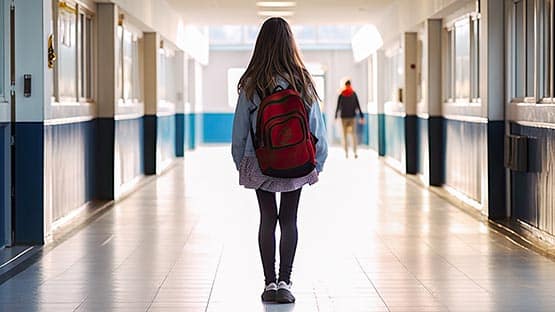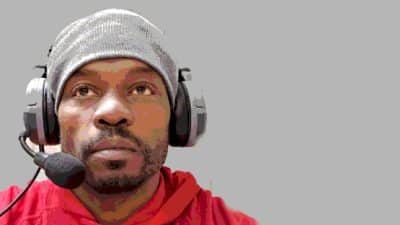
With mass shootings and the wide availability of guns in the United States today, there is a considerable amount of worry when it comes to school violence and the safety of children and teens both inside and outside of the classroom.
Research shows that in the 2022-23 school year, educators dealt with more than 1,900 threats and 700 incidents of violence nationwide.
An analysis on the 2022-23 school year related to violence states that “the potential for violence exists in all schools, every day.”
In a Waynesboro elementary school this month, a fourth-grade student allegedly told a classmate they had a “kill list.”
While it is rare that violence escalates to the use of guns or other weapons by students at this age, you can point to two cases in Hampton Roads recently that show it can happen. And just this week, on Tuesday, a Richmond elementary school second grader brought a loaded gun to school.
“Elementary kids, unfortunately, will make threats or sort of copy, what they see happening in older schools and at the secondary level,” said Dr. Amy Klinger, co-founder and director of programs at the Educator’s School Safety Network, a 501(c) 3 not-for-profit organization dedicated to empowering educators with school safety training and resources. “There’s still the same investigation that you would do at a middle school or high school,” she said, “but it really points out the need for a behavioral threat assessment to be able to investigate what’s happening with the student, not just from a criminal sense, but also from a supports and intervention sense.
“People think that’s just done at the secondary level, but it’s really critical at the elementary level, especially if you want to intervene and break the cycle of that kind of behavior.”
Schools do usually dole out punishment when it comes to threatening behavior of students at any age, but more importantly, Klinger said, the school administration should look at a long-term support plan for the troubled student.
“The school always needs to have appropriate supports and interventions put in place that are not just discipline, but that are also ongoing. Behavioral monitoring, mentoring in some situations … making amends, that kind of thing, but that it’s not just a one-and-done … you’re trying to make sure it’s ongoing.”
Waynesboro Public Schools Assistant Superintendent Ryan Barber told AFP that the school system employs school psychologists, social workers, counselors, behavioral analysts and social/emotional learning educators.
“All of these professionals work to increase the ability of our students to fully access the learning environment with the support they need to be successful,” said Barber. “Many times, if there are concerns related to safety, detailed safety plans are developed so any safety threat is mitigated to the greatest extent possible.”
Waynesboro Public Schools also work with two outside agencies, Elk Hill and Valley Community Services Board, to address the mental health needs of students.
“The school has to walk the line between we don’t want a kid to be condemned for the rest of their school career because of one action when they were quite young and unable to really see the consequences of that,” Klinger said.
As an administrator, it can be challenging to reassure parents after a threat that their child is safe in the same school, and even same classroom, with the student who threatened violence.
“That’s the balance that the school has to strike of making sure there are proper supports and interventions but also making sure that people have the assurances. They need to feel that they are, in fact, safe. And that’s difficult to do sometimes.”
The key to feeling safe after an incident in a school starts with a proactive approach, according to Klinger. While schools usually don’t disclose an emergency plan, schools should be open and upfront that they do have procedures in place to protect children.
“We really work with schools to have these kind of conversations with parents before something like this happens so that people understand the process, and what a threat assessment is, and what are some examples of supports and interventions, so that people aren’t doing it for the first time when they’re feeling vulnerable and emotional and upset,” said Klinger. “I think the more you can communicate with parents about your preparedness, and what you are doing to keep their kids safe, the better everybody is.”
Virginia was one of the first states to mandate behavioral threat assessments, Klinger said, where you follow a very specific process to determine if a student is at risk for violence against themselves or others.
Waynesboro Public Schools have threat assessment teams that include the Waynesboro Police Department, Barber said. The Code of Virginia sets out requirements for schools to follow in cases of threatening behavior or bullying. Barber believes the threat assessment program at WPS exceeds those requirements.
“The takeaway in all of this is that schools need to work on the front end to be proactive instead of waiting for incidents to happen,” Klinger said. “The more that schools can do prevention and proactively communicate and make plans and provide training, the better off they are going to be.”
Barber said that Waynesboro Schools have proactive strategies that are used to support families and the children involved with threats, and that staff members “do everything we can to prevent violence.”
Klinger said that the research of ESSN over the past several years has shown that despite more prevention is schools, violence is continuing to happen.
“It’s not just isolated to just secondary schools,” Klinger said. “Elementary schools certainly have the same kind of challenges of people making threats … it really points to the need for a really comprehensive kind of K-12 approach to school safety. The high school isn’t the only place we need to worry about.”
Related stories
Virginia fourth-grader allegedly on ‘kill list’; parent outraged at school’s response
Waynesboro Schools work to meet needs of students, including mental health
No safety net: Families desperate, experiencing homelessness in Waynesboro










